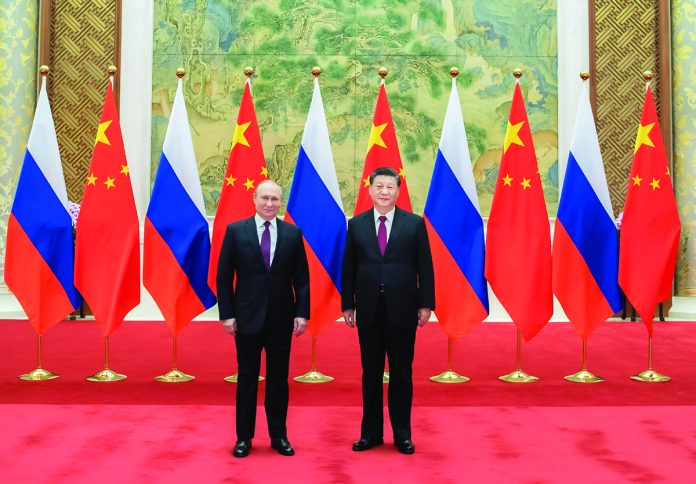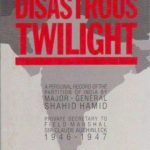Mirza Kashif Baig
President Trump’s strategic maneuvers on the global chessboard have consistently sparked controversy and speculation, and his latest geopolitical gambit an attempt to pivot Russia away from its partnership with China stands as one of his most audacious yet. This “Reverse Nixon Doctrine,” as analysts have termed it, mirrors Richard Nixon’s famous Cold War policy but inverted: instead of courting China against the Soviets, Trump aims to draw Russia closer, effectively isolating China. However, beneath this calculated diplomatic veneer lie profound implications for Russia, potentially leaving Moscow dangerously isolated, economically vulnerable, and geopolitically exposed.
At the core of Trump’s latest strategy lies a simple yet powerful premise: China, rather than Russia, represents America’s most significant threat to global supremacy. Trump’s administration has made no secret of its desire to curb China’s growing economic and military prowess. By enticing Moscow away from Beijing, the United States hopes to diminish China’s global influence and severely disrupt the powerful Sino-Russian partnership, which has emerged as a significant counterweight to Western dominance.
Yet, Trump’s apparent generosity toward Moscow comes with significant strings attached. For Russia, distancing itself from China would mean severing critical economic ties that have grown immensely valuable, particularly in recent years. Today, after India, China is Russia’s largest crude oil and natural gas buyer. Energy exports to China provide Russia with a reliable revenue stream that significantly cushions the nation against Western sanctions and geopolitical isolation. A sudden pivot away from Beijing would force Russia to seek alternative markets in an already saturated global energy landscape no simple task, considering that Europe remains cautious due to ongoing tensions over Ukraine and America’s continued pressure for reduced reliance on Russian energy.
Moreover, Russia’s relationship with China extends beyond oil and gas exports. The two nations have forged deep strategic alliances, cooperating on military technology, joint military exercises, infrastructure projects, and investments in emerging technologies. Chinese investment has buoyed the Russian economy amid sustained Western sanctions and geopolitical friction. Any abrupt shift away from China would inevitably come at enormous economic cost to Russia, potentially plunging the nation into deeper fiscal turmoil.
Given these stark realities, the question arises: What exactly can the United States offer Moscow that would justify such a substantial geopolitical gamble? Certainly, Washington could provide some attractive short-term incentives lifting economic sanctions, increasing bilateral trade, facilitating Western investment, or perhaps promising limited diplomatic concessions on critical issues such as the ongoing conflict in Ukraine. Indeed, recent diplomatic engagements between Trump and Putin hint at tentative discussions about potential concessions, possibly including partial easing of sanctions and acknowledgment of Russia’s security concerns in Eastern Europe.
Yet, history has demonstrated that American promises especially those contingent upon shifting geopolitical alignments carry inherent risks and uncertainties. Having navigated decades of adversarial relations with Washington, Russia understands that today’s diplomatic assurances may quickly vanish with tomorrow’s administration or policy shift. Given the volatility of recent American foreign policy and its shifting alliances, Moscow would rightfully question the reliability of any U.S. commitments.
Furthermore, Russia may carefully evaluate the strategic implications of aligning itself more closely with the United States. Such a move could severely restrict Moscow’s strategic autonomy, forcing Russia into a subordinate role within a U.S.-dominated geopolitical structure. Moscow deeply values its independence on the world stage; compromising its strategic flexibility for uncertain American concessions is a gamble Putin might be unwilling to take.
Another crucial factor Russia must consider is China’s likely response to any perceived betrayal. Already keenly aware of Trump’s intentions to isolate it, Beijing would undoubtedly retaliate economically and politically against Russia, further exacerbating Moscow’s isolation. A Chinese economic backlash could severely damage Russia’s economic stability, as alternative economic partners capable of replacing China’s enormous market are practically nonexistent. Politically, abandoning China could render Russia even more isolated, alienating existing allies and leaving Moscow dangerously vulnerable to Western pressures.
Undoubtedly aware of these potential consequences, Russia finds itself at a critical crossroads. On the surface, Trump’s Reverse Nixon Doctrine presents an appealing narrative an opportunity for Moscow to emerge from isolation and sanctions, re-engage with Western markets, and potentially secure diplomatic victories on key geopolitical disputes. However, beneath this attractive surface lies the stark reality of Russia’s precarious geopolitical position. Accepting Trump’s overtures could well trap Russia in a strategic dead end economically weakened, politically compromised, and more isolated than ever before.
Ultimately, the success of Trump’s Reverse Nixon Doctrine depends entirely on Russia’s perception of American promises’ sincerity, sustainability, and credibility. President Putin and his advisors must navigate a treacherous geopolitical landscape, fully aware that aligning too closely with Washington could alter Russia’s international position for decades.
A miscalculation could cost Russia its partnership with China and its economic stability and geopolitical leverage, leaving Moscow deeply vulnerable. Thus, while Trump’s gambit seeks to remake global power dynamics to America’s advantage, it simultaneously represents a grave risk for Russia. Whether the Kremlin sees through this calculated American maneuver, recognizing its potential dangers and pitfalls, remains an open question. Moscow now faces perhaps its most challenging geopolitical decision in decades. This choice will profoundly shape the global balance of power and determine Russia’s future role on the international stage.
The author is the Editor of the Monthly Interaction.










